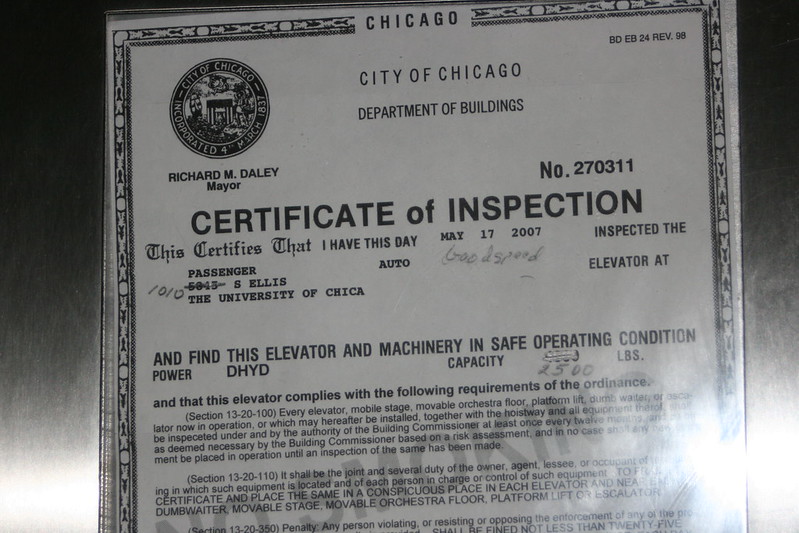
At some point you may have noticed some official-looking paperwork in a hotel or office elevator. These are certificates of inspection, and they may come from a city building department or a state agency (in North Carolina it’s the Department of Labor, in Ohio the Department of Commerce, in Oregon the Building Codes Division of the Department of Insurance and Consumer Affairs).
And you may have wondered: Why are government agencies inspecting elevators? What are they inspecting them for? And how did state and local governments end up with this responsibility?
The not-so-surprising answer to the second question is governments inspect elevators to be sure they are safe, just as they certify buses and trucks are safe to travel the highways and oversee rigorous inspections of commercial aircraft.
But why elevators? Well, here is a surprise: It turns out that elevators are the most heavily used public conveyance in America. There are 900,000 elevators in the U.S., offering about 325 million rides a day. Going up and down, elevators travel 1.36 billion miles a year. That’s the equivalent of 13 round-trip journeys from Earth to Mars.
And accidents do happen. Elevators and escalators kill about 30 people a year; roughly half of them involving people working on or near elevators. They seriously injure another 17,000. And even being trapped on an elevator for more than a few minutes—certainly the most benign thing that can go wrong—can be a scary experience for many.
But this is far better than the safety record of the late 1800s and early 1900s, when elevators spread through cities. A good deal of the improvement is because of better technology. But give the government elevator inspections some credit, too.
But why did governments end up with the responsibility for making sure elevators work properly? It was public demand. Newspapers in the late 1800s were filled with stories about unsafe buildings, and horrifying elevator accidents were a staple. Typical was this headline from the front page of the New York Times on Sept. 11, 1897: “FELL NINETEEN STORIES; Awful Descent of an Elevator in the Building of the American Tract Society. TWO LIVES CRUSHED OUT; The Fourth Elevator Accident in the Same Building Kills the Engineer and One of the Elevator Boys.”
And just as cities created building departments to inspect offices, hotels, stores and apartment houses for safety and sanitation, they hired elevator inspectors, who were knowledgeable about the machinery of elevators.
Why do some places have city inspectors and some leave elevator inspections to the state? Almost always, it’s because of historical precedence. If a big city (New York or Chicago, for example) had elevator inspectors, state legislatures usually left them in place. Los Angeles is typical; it started inspecting elevators in 1896, before the state. It is the only city in California where the state Department of Industrial Relations doesn’t do inspections.
So if you’ve never been afraid to take an elevator—and maybe even a little reassured by the certificate in the car—you can thank government (sometimes the city, sometimes the state) for looking after your safety.
More information:
https://kencorelevator.com/five-elevator-inspection-mythbusters/
https://www.cnn.com/style/article/short-history-of-the-elevator/index.html
https://www.newyorker.com/magazine/2008/04/21/up-and-then-down
https://www.connectionselevator.com/interesting-facts-you-might-not-know-about-elevators/
Give the credit to: local governments 50%, state governments 50%
Photo by Quinn Dombrowski licensed under Creative Commons.
[…] looked at elevators and how state and local inspections made this perhaps the safest mode of transportation around. […]